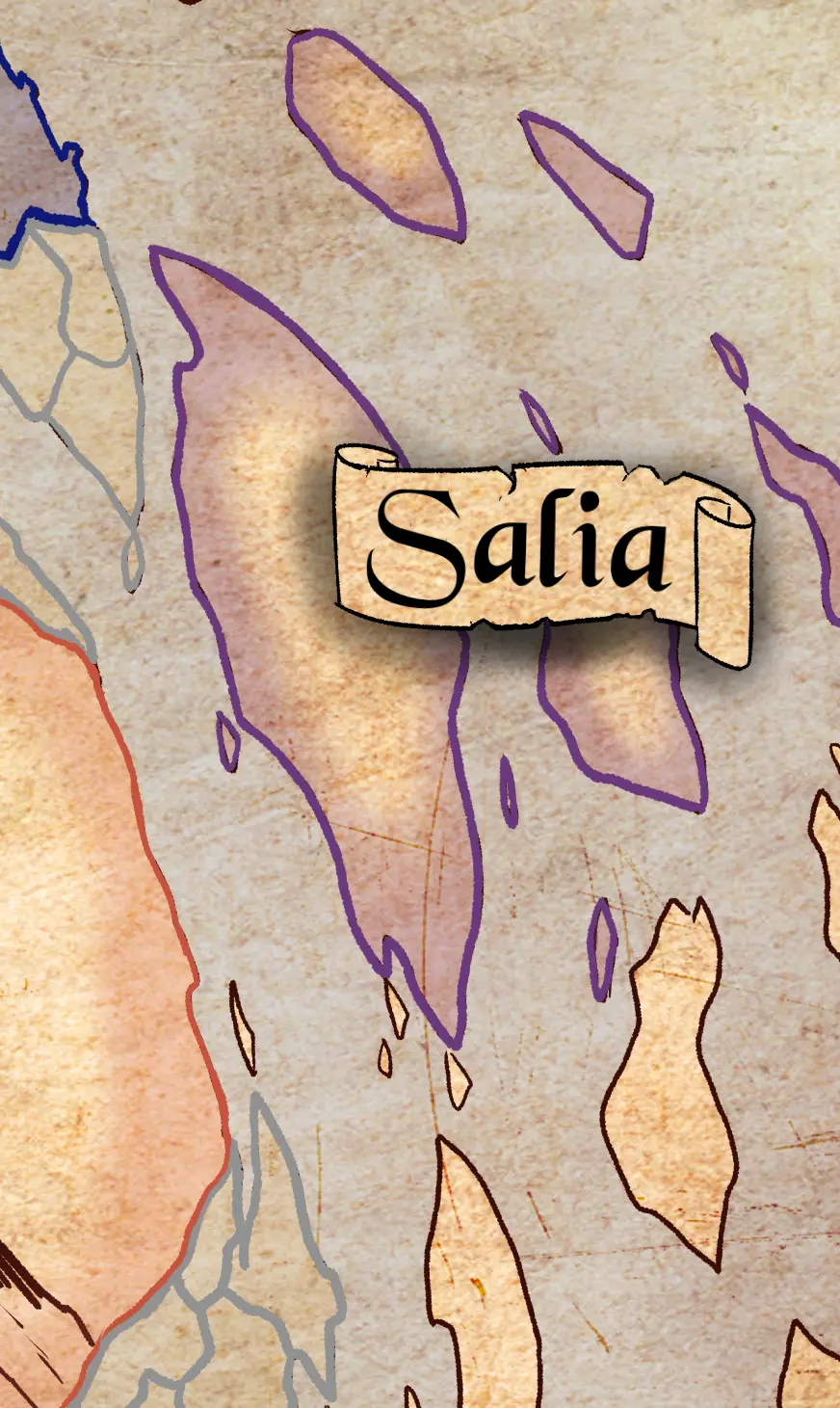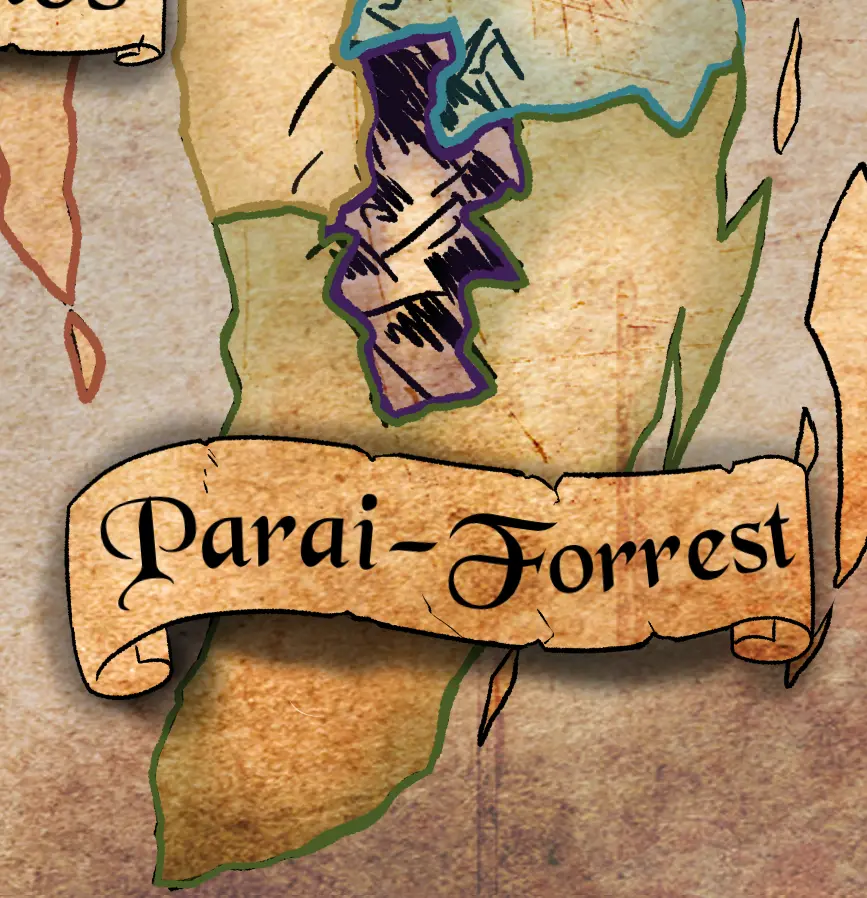The Tipu
The Tipu are plant-like creatures, each of which plays a role in a larger ecosystem.
1. Choose a plant
Players who want to play as Tipu must choose a plant from which their Tipu is descended. Real-life examples can be used for this, or the plants that appear in the lore.
A Tipu is created when the flower of a tree elder (a very old Tipu) comes into contact with the pollen of another plant. The newly emerging Tipu takes on characteristics of that plant.
Since a tipu is directly descended from a plant, it takes on the advantages and disadvantages of that plant. For example, if the plant has thorns, the Tipu itself will also equip its body with thorns. If the plant can release poisons, a Tipu descended from this plant can also do so.
A player can be creative here. Abilities like aphrodisiac pollen sound unspectacular, but can lead to the most entertaining situations.
2. Strengths and weaknesses
As plants, Tipu are usually susceptible to fire. Many Tipu therefore have tremendous fear of fire. The vast majority of Tipu eat a purely vegan diet (with the exception of those descended from carnivorous plants). They also get much of their energy from sunlight. Therefore, most Tipu are weaker at night.
Tipu can communicate with plants through direct contact. However, normal plants often have a very simple mind and a very selective memory. It is also possible for a tipu to grow offshoots of its own plant genus from its own body. These offshoots can continue to grow on contact with the soil, provided sufficient nutrients are available nearby.
Examples of special abilities
- Grow and control vines
- Release pollen that is poisonous or cloud the mind
- Have a thick bark instead of skin for better defence
- Grow thorns (with or without poison)
These are some examples of the special abilities a tipu can have.
3. The character of the Tipu
Tipu are often very contradictory creatures. It is very difficult to deduce their nature from their appearance.
For example, they are often beautiful, but also poisonous, manipulative and vain. Others are beautiful creatures on the outside as well as on the inside. It is very difficult to determine this from the outside.
In addition, every Tipu has an urge that is difficult to ignore. This expresses itself differently in each one. While some only want to explore the world, others feel the urge to destroy any uninvited intruder.
Most are unaware of the exact purpose of their urge, but there are only few Tipu who questions their urge. Some see it as the will of the forest.
4. Tipu magic
Tipu are not emotional in the same way as other species. They perceive their environment more as a progression of natural circumstances, which means they do not have a very strong emotional response to the events around them.
This means that Tipu often find it very easy to control magic. A Tipu very rarely uses magic unconsciously. And often has their emotions in check. The disadvantage of this, however, is that a tipu rarely has enough emotions on their own to cast a spell.
They usually have to rely on the emotions of others.
In Tipu societies there are therefore often only a few shamans who can cast magic. If they do use magic, they have a small army of Tipu with them, who are only there to provide enough emotions to cast spells.
In the great forests, they can connect to the forest's root network to access the emotions of all forest dwellers who are currently in contact with the root network. This allows Tipu to cast very powerful magic in large forests.
5. Life cycle
A tipu goes through 3 phases in life.
5.1. Para

When the flowers of a tree elder are fertilised, it forms a seed from which a tipu can grow. With the help of roots, branches, tendrils and other plant resources, the Tipu forms develops limbs with which it can then move.
In this form, the Tipu often unconsciously imitates other living creatures around it, which is why the appearance of a Tipu depends very much on its environment. e.g: In the vicinity of humans or dyr, the Tipu will often take on a humanoid or animal form, making it easy for them to interact with societies. Young tipu are often barely recognisable as such.
Tipu that grow up away from humans and Dyr can take on very unusual shapes. The appearance also depends on the plant species of the Tipu. e.g.: A Tipu that descends from a slime mould may not have a clearly defined body at all.
5.2. Puti

At some point a Para passes into the Puti stage. The transition is smooth. A Tipu develops more and more of its plant characteristics in this stage. This starts with little things, like leaves, flowers or mushrooms growing on their body.
Later, larger changes occur. Some develop a hard bark instead of their skin, which makes them slightly less mobile, but protects them from attack. Others grow tendrils along their arms.
In this phase, the ability of many Tipu to communicate with plants becomes stronger and stronger, which can even go so far that they can give commands to the plants and thus control them.
Note on plant control: The Tipu gives the plant a command, which it carries out. This command must be formulated by the player and then interpreted by the game-master. So care must be taken in what commands are given to the plants.
5.3. Pakiaku

The older a Tipu gets, the slower its body and mind become, which eventually results in, them finally taking root in the ground and becoming part of their environment. Some retain the ability to move or speak for a long time, but at some point a Tipu inevitably becomes a tree elder, or Pakiaku.
At this stage, a Tipu can connect its roots with other plants to become one with the forest. Over a long period of time, this can result in gigantic root networks, as a Pakiaku can live for hundreds (and in extreme cases thousands) of years. It is also possible for it to sire offspring, by having their flowers come into contact with pollen from other plants.
As tipu can only reproduce at this stage, the pakiaku are the heart of every forest. If a tipu has experienced severe trauma before becoming a pakiaku, it can pass this on to its offspring. This results in so-called cursed forests, which are extremely aggressive towards everyone.
6. Crops
In Afrat there are thousands of small forests where Tipu live. These are scattered across the lands. However, there are two large contiguous tipu forests.
6.1. Salia

The forest of Salia stretches over a group of islands in the northeast of Afrat. On the islands, a conflict between the land and the sea has raged for many millennia. On land live the Haruru, who inhabit the dense mixed forests and use their earth magic to expand the land masses slowly. In the water, the Ngaru live in coral reefs and kelp forests. They use their water magic to erode Salia's coasts piece by piece and thus expand their maritime habitat.
It is extremely dangerous for outsiders here, as the Tipu are very strict against intruders. and one can quickly get caught between the fronts of the Ngaru and the Haruru.
Tipu from Salia rarely travel to the mainland of Afrat. If this does happen, the Tipu often stands out strongly, as the Tipu from Salia hardly resemble their fellow Tipu from other forests. They are often capable of powerful magic, as they live in a very close relationship with the primal forces of Salia.
6.2. Parai Forest

The Parai forest covers the entire southern tip of Afrat. The forest is extremely densely overgrown, and it is difficult for outsiders to cross. The forest is dominated by the paraian Giant, a tree that grows up to many hundreds of metres high and multiple kilometers wide.
The Paraians inhabit all levels of the forest. From the moss-covered ground, to the crowns of the first trees, to the towering peaks of the Paraian giants. Some of the villages hang hundreds of metres above the ground. There are inhabitants, that have never set foot on the ground of the forest, but have spent their entire lives in the lofty heights of the giants.
The Paraians are very open to other species as long as they do not harm the forest. Those who help defend the forest against the many pests are especially welcome. If you ever meet a tipu outside the forest, it usually comes from the Parai forest.
All plants of the Parai forest are connected to each other by a network of roots. This enables the forest to keep an eye on every square centimetre and to react immediately in the event of an attack on the forest.
